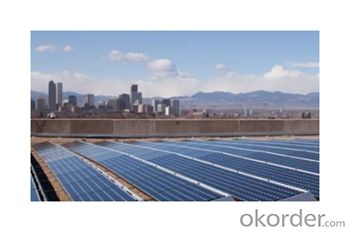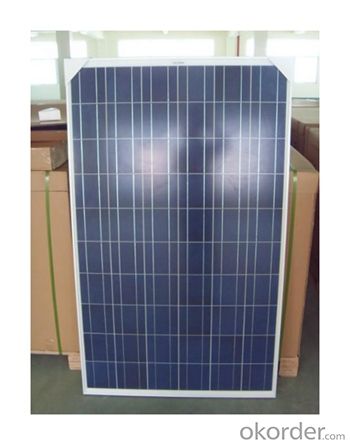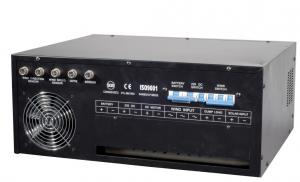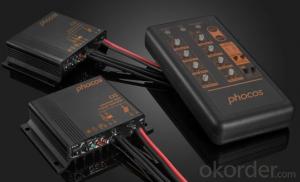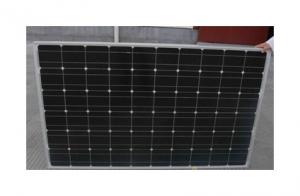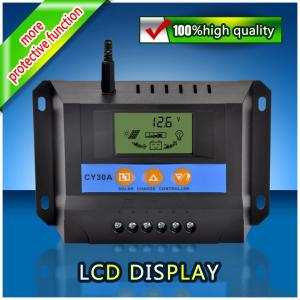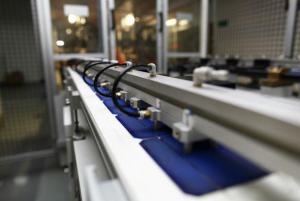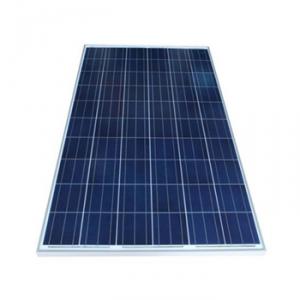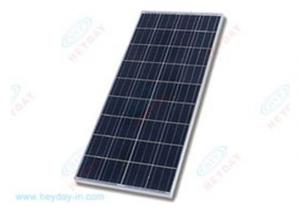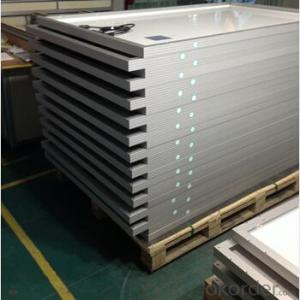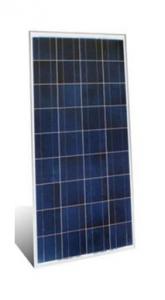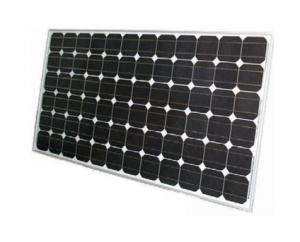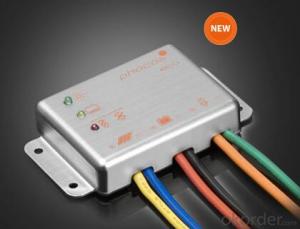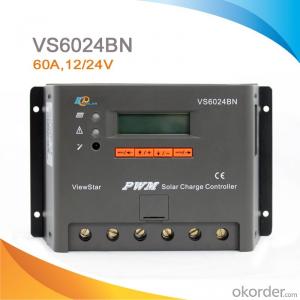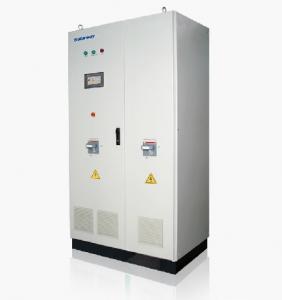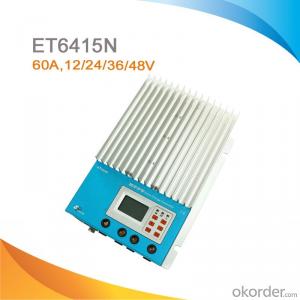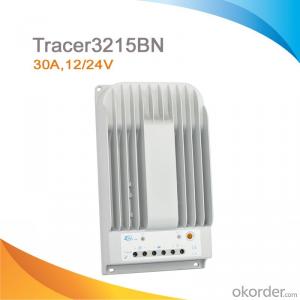Solar Panels Controllers for Poly-Crystalline 245W 156*156 Solar Modules
OKorder Service Pledge
OKorder Financial Service
You Might Also Like
Solar Module Descriptions:
Solar Power Modules (known as Photovoltaics - PV) can generate electricity for your home or business, either as part of a stand-alone solar power system, or for buildings already connected to the local electricity network.
PV systems use the most abundant energy source on the planet, solar radiation, to generate electricity. They are silent, consume no fuel and generate no pollution. They also contribute to the reduction of greenhouse gas emissions; a 2kW PV system on a house will prevent the emission of about 40 tonnes of CO2 during its projected 30 year lifetime. Furthermore, the use of PV will reduce your electricity bills and exposure to fluctuating and steadily rising electricity prices.
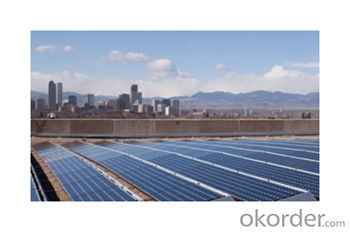
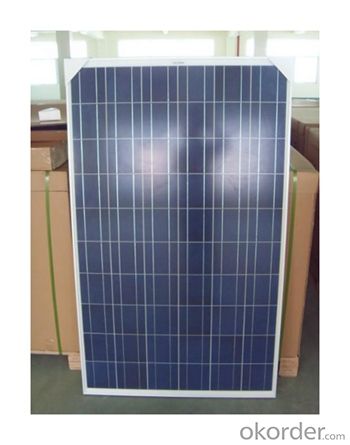
Electrical Characteristics
Max-power (W) | 245 |
Max-Power Voltage (V) | 30.40 |
Max-Power Current (A) | 8.06 |
Open-Circuit Voltage (V) | 37.50 |
Short-Circuit Current (A) | 8.66 |
Mechanical Characteristics
Cable type, Diameter and Length | 4mm2, TUV certified, 1000mm |
Type of Connector | Compatible with MC4 plug |
Arrangement of cells | 6*10 |
Cell Size | 156*156 |
Dimension | 1580*1069*45 |
Weight | 19.5Kg |
Glass, Type and Thickness | High Transmission, Low Iron, Tempered Glass 3.2mm |
Features
Guaranteed positive tolerance 0/+5w ensures power output reliability
Strong aluminum frames module can bear snow loads up to 5400Pa and wind loads up to 2400Pa.
Excellent performance under low light environments (mornings evenings and cloudy days)
12 years for product defects in materials and workmanship and 25 years for 80% of warranted minimum power.
Certifications and standards: IEC 61215.
Manufactured according to International Quality and Environment Management System (ISO9001, ISO14100).
FAQ
Q: Do you have any MOQ limit?
Our MOQ is 200 pieces.
Q: How long is the warranty period for the solar modules?
15 years 90% of its nominal power rating.
25 years 80% of its nominal power rating
Q: What is PV & how does it work?
PV stands for photovoltaic. Photo = Light and Voltaic = Electricity. A solar cell converts light to electricity.
A solar cell is made of silicon. Computer chips are made of this same material. Basically, when light strikes the surface of a solar cell some of it is absorbed into the silicon. This light energy bumps the electrons loose and causes energy to flow.
By packaging approximately 36 solar cells together a solar panel or a solar module is created. When you have more then one solar panels you create a solar array.
- Q: Can a solar controller be used with a solar-powered GPS tracker?
- Yes, a solar controller can be used with a solar-powered GPS tracker. A solar controller regulates the flow of electricity from the solar panels to the battery, ensuring efficient charging and preventing overcharging. This is crucial for maintaining the power supply to the GPS tracker, especially in situations where there may be variations in sunlight intensity.
- Q: Can a solar controller be used for both off-grid and grid-tied systems?
- No, a solar controller cannot be used for both off-grid and grid-tied systems. Off-grid systems require a solar controller to regulate the charge of batteries, whereas grid-tied systems do not require battery storage and therefore do not need a solar controller for this purpose. The functionalities and requirements of solar controllers vary depending on the specific system type.
- Q: Can a solar controller be used with a solar inverter?
- Yes, a solar controller can be used with a solar inverter. A solar controller helps regulate and optimize the charging and discharging of batteries in a solar power system, while a solar inverter converts the direct current (DC) generated by solar panels into alternating current (AC) for use in powering electrical devices. Both components work together to effectively manage and utilize solar energy in a renewable energy system.
- Q: How does a solar controller prevent overloading of batteries?
- A solar controller prevents overloading of batteries by regulating the flow of electricity from the solar panels to the batteries. It monitors the battery voltage and prevents it from exceeding a certain threshold by disconnecting the charging source when the batteries are fully charged. This ensures that the batteries are not overcharged and damaged, maximizing their lifespan.
- Q: What is the maximum power consumption of a solar controller itself?
- The maximum power consumption of a solar controller itself typically ranges between 0.5 watts to 5 watts, depending on the model and features of the controller.
- Q: What is the purpose of a solar controller?
- The purpose of a solar controller is to regulate and optimize the charging and discharging of solar batteries, ensuring efficient and safe operation of solar power systems.
- Q: How do you prevent overheating of a solar controller?
- There are a few ways to prevent overheating of a solar controller. Firstly, it is important to ensure that the controller is installed in a well-ventilated area, away from direct sunlight or any heat sources. Additionally, using heat sinks or fans can help dissipate excess heat from the controller. Regular maintenance, such as cleaning dust or debris from the controller, can also aid in preventing overheating. Lastly, choosing a solar controller with built-in temperature sensors and automatic shut-off features can provide added protection against overheating.
- Q: Can a solar controller be used with solar-powered indoor transportation hubs?
- Yes, a solar controller can be used with solar-powered indoor transportation hubs. A solar controller is a device that regulates the flow of electricity from solar panels to batteries or other energy storage systems. In the case of indoor transportation hubs powered by solar energy, a solar controller can be used to manage the energy generated by the solar panels and store it in batteries to be used during low-light conditions or when there is high demand for electricity. This ensures a reliable and consistent power supply for the indoor transportation hub, allowing it to operate efficiently and sustainably. Additionally, a solar controller can also provide important monitoring and protection functions, such as preventing overcharging or over-discharging of the batteries, optimizing energy usage, and ensuring the longevity of the solar power system. Therefore, using a solar controller in conjunction with solar panels can enhance the performance and reliability of solar-powered indoor transportation hubs.
- Q: What are the different types of solar controllers?
- There are three main types of solar controllers: PWM (Pulse Width Modulation), MPPT (Maximum Power Point Tracking), and basic on/off controllers.
- Q: How does a solar controller handle the protection against overloads?
- A solar controller handles protection against overloads by monitoring the current flowing from the solar panels to the batteries. It ensures that the maximum current limit is not exceeded, preventing damage to the batteries or other connected components. This is achieved through various techniques such as pulse width modulation (PWM) or maximum power point tracking (MPPT) algorithms, which regulate the charging process and adjust the charging voltage accordingly. Additionally, some solar controllers may also have built-in overload protection mechanisms like fuses or circuit breakers to further safeguard against excessive currents.
Send your message to us
Solar Panels Controllers for Poly-Crystalline 245W 156*156 Solar Modules
OKorder Service Pledge
OKorder Financial Service
Similar products
Hot products
Hot Searches
Related keywords


